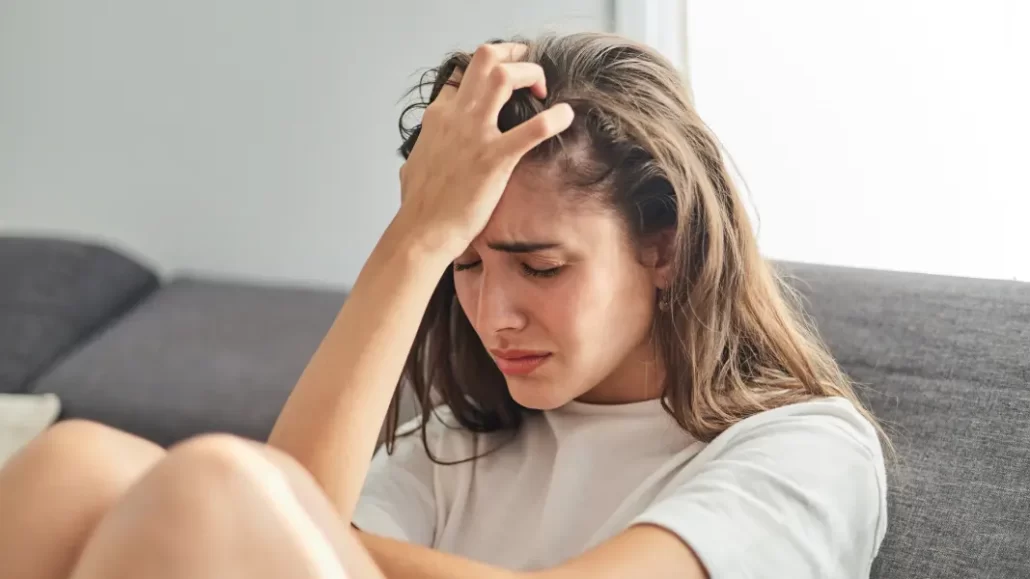Experiences with and the understanding of anxiety and panic have become increasingly widespread and mainstream. However, the distinctions between the two and how they manifest can still be murky for many. This blog will help increase your knowledge and awareness about panic and anxiety. It will cover similarities and differences plus how to manage a panic or anxiety attack.
Anxiety: Is It Good for Anything?
It is important to begin with the understanding that anxiety is not exactly useless or unhealthy. It can actually serve a purpose. Anxiety is a universally experienced emotion that can alert us to stress or potential danger. Almost like the human body’s “alarm system,” it has helped our species survive over the years.
This is what is often referred to as the “fight, flight or freeze” responses. It helps us avoid major accidents, such as by choosing to wait at a crosswalk to avoid erratic car traffic. Anxiety can also manifest as a sense of concern for people and things we care about. An example of this would be calling a family member who hasn’t arrived at an agreed meeting place and time. It can influence our motivation to successfully complete a big school or work assignment. These could be considered typical, even healthy, manifestations of how anxiety sometimes supports our best interests.
However, anxiety can begin to cause problems when it impairs your functioning or creates greater stress than a situation warrants. It can also intensify in a way that inspires panic. This can be like a sudden surge of heightened anxiety that triggers severe physical reactions.
Anxiety Attack, Disorder or Is It Panic?
Put simply, anxiety is a feeling of unease. It can range from mild to severe and can include feelings of worry and fear. It can also include apprehensive expectations of future or unknown outcomes. The most common symptoms of anxiety are restlessness or feeling on edge; being easily fatigued; having difficulty concentrating or mind going blank; irritability; muscle tension; and sleep disturbance (Diagnostic and Statistical Manual, DSM-5).
Having most of the above symptoms excessively for the better part of six months and experiencing them across different life areas (e.g., home, work, school) may be a sign of an anxiety disorder, such as generalized anxiety disorder. However, “anxiety attack” is more of an informal description than a medical term. It may refer to what feels like an episode of pronounced anxiety but doesn’t quite fit the definition of a panic attack.
Panic could be thought of as the most severe form of anxiety. Panic attacks are intense attacks of fear and anxiety. They usually occur in response to a stressful event but can also be triggered for no apparent reason. Some of the symptoms of a panic attack include the sense of impending doom or danger; fear of loss of control or death; rapid, pounding heart rate; sweating; trembling or shaking; and shortness of breath or tightness in your throat. If one spends long periods in constant fear of another attack, it may be a condition called “panic disorder.” With panic disorder, a person’s excessive worry about having a panic attack becomes their main source of anxiety.
More people tend to experience anxiety than panic attacks because anxiety is a part of our normal emotional lives and there are many contexts that can make us feel anxious.
What Happens During a Panic Attack?
While some people believe that panic attacks are driven solely by the mind, they are actually the culmination of a “constellation” of both physical and cognitive symptoms. During a panic attack, adrenaline is released into the bloodstream. Consequently, the heart beats faster, and breathing becomes shallow and harder. Some people, upon experiencing their first panic attack, fear that they are losing control of their bodies or are having a heart attack and will die.
However, panic attacks are not deadly. The body will return to a normal state after the adrenaline is metabolized, which can take a few minutes, but generally no more than 15-30 minutes. The worst physical impact could be fainting, but the person experiencing the attack will always begin to breathe normally again (Jacobs Hendel, 2018). Working with medical health care experts, the New York Times recently published a helpful animation that visualizes what happens in our bodies when we have a panic attack.
Panic attacks can occur during situations of profound fear, like confronting an emergency or disaster. However, many people experience panic attacks as the result of an anxiety that, although very real to them, is in relation to something that is not life-threatening. At times, people who experience panic attacks experience them for no discernible reason.
Read more about how to help someone having a panic attack.
Many people will only have one or two panic attacks in their lifetime before the problem goes away, usually because an intensified period of stress has ended. However, some people have recurrent panic attacks linked to certain stressors. Others may experience unexpected panic attacks that seem to come out of nowhere.
Treatment Options for Anxiety and Panic
Although the precise definitions and sensations can be challenging to isolate, one thing is clear: if you are living uncomfortably with anxiety or panic, you should consider seeking assistance from a mental health professional. The good news is that effective treatment is available in a variety of forms.
Mental health professionals can help you find ways to manage anxiety and treat panic attacks. This can be achieved using regular therapy sessions that focus on the cognitive, emotional, and behavioral aspects of the attacks. They can also help you develop plans and strategies for responding to and managing panic attacks. These can include learning helpful breathing exercises and learning physical “tricks” that can sideline your panic response (e.g., rinsing your face with cold water, brushing your teeth, or simply pacing). Medications may also be used in some cases to augment therapy for anxiety.
Maintaining healthy behaviors like regular physical exercise, good sleep patterns, and avoiding the use of alcohol or caffeine can also provide a good baseline for keeping anxiety and panic-related symptoms at bay.
Are you interested in exploring how you experience and manage anxiety? Reach out to myTherapyNYC to find out which of our therapists would be a good fit for you!
How do you handle your anxiety? Join the conversation in the comments below.
- Differences Between a Panic Attack and an Anxiety Attack - April 20, 2023
- How to Talk About Mental Health at Work - November 10, 2022
- What is Substance Use Disorder? - August 18, 2022






4 comments
Gregory,
I appreciate your writing style and the way you described the difference between a panic attack and an anxiety episode. Thank you for your insight. I will share this blog with others.
Thanks, Marilyn! I hope others find it helpful.
With so much discussion around anxiety in the media, online, etc., your blog helped identify differences between panic and anxiety in a digestible way. This will be helpful for others who are experiencing anxiety or panic either for the first time or in a new way than previously.
Thanks, Jonathan! Agreed that it can be difficult navigating the various discussions on anxiety, which is why trustworthy, evidence-based sources are so critical. I’m glad this was digestible.